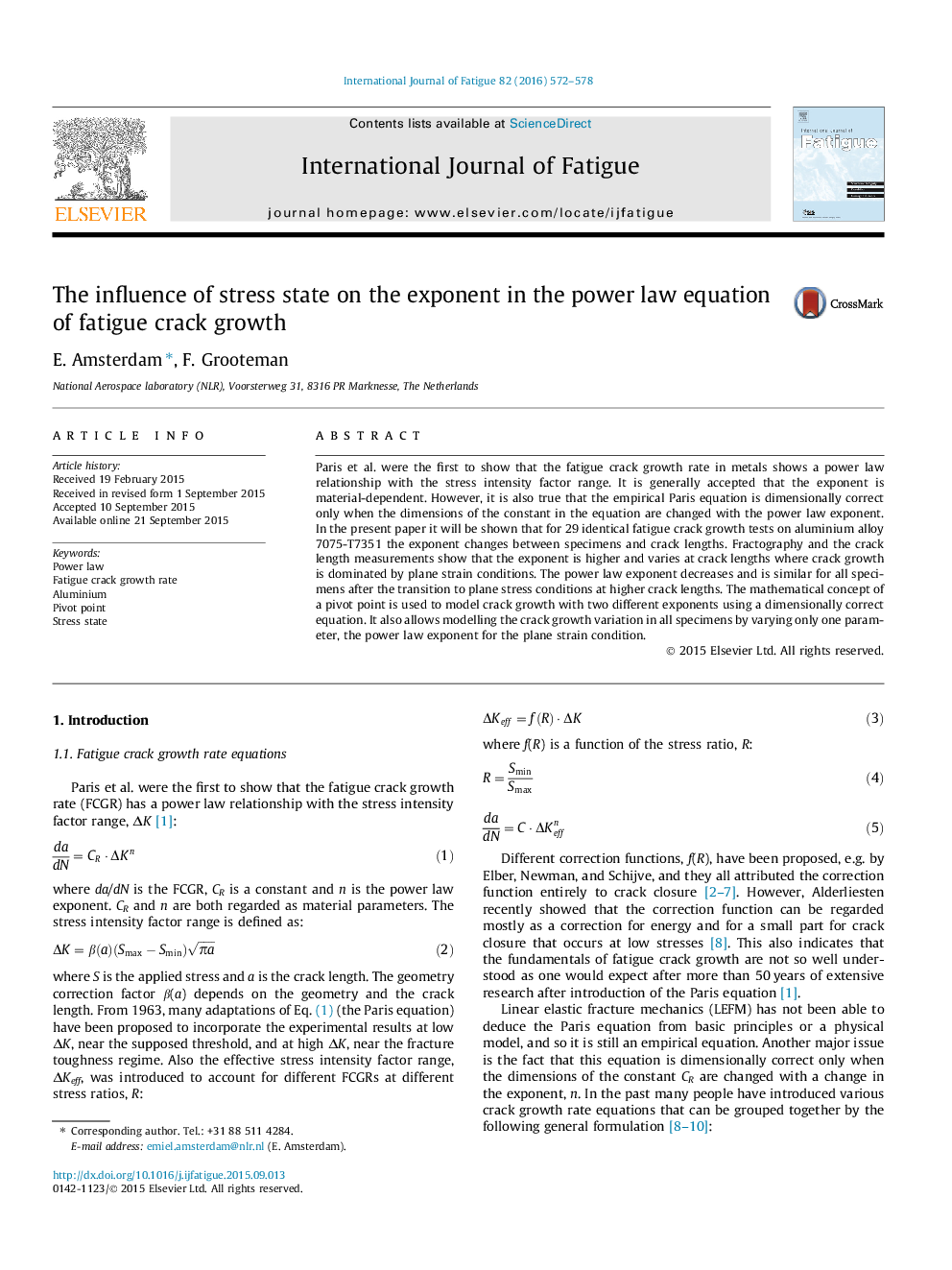| Article ID | Journal | Published Year | Pages | File Type |
|---|---|---|---|---|
| 7171856 | International Journal of Fatigue | 2016 | 7 Pages |
Abstract
Paris et al. were the first to show that the fatigue crack growth rate in metals shows a power law relationship with the stress intensity factor range. It is generally accepted that the exponent is material-dependent. However, it is also true that the empirical Paris equation is dimensionally correct only when the dimensions of the constant in the equation are changed with the power law exponent. In the present paper it will be shown that for 29 identical fatigue crack growth tests on aluminium alloy 7075-T7351 the exponent changes between specimens and crack lengths. Fractography and the crack length measurements show that the exponent is higher and varies at crack lengths where crack growth is dominated by plane strain conditions. The power law exponent decreases and is similar for all specimens after the transition to plane stress conditions at higher crack lengths. The mathematical concept of a pivot point is used to model crack growth with two different exponents using a dimensionally correct equation. It also allows modelling the crack growth variation in all specimens by varying only one parameter, the power law exponent for the plane strain condition.
Related Topics
Physical Sciences and Engineering
Engineering
Mechanical Engineering
Authors
E. Amsterdam, F. Grooteman,
